Avalanche Evergreen Clematis – 2 Gallon Pot
$79.97 Original price was: $79.97.$55.98Current price is: $55.98.
SKU: D2LSC 9944927588 Categories: Clematis Vines, VINES & CLIMBERS
- Experience the difference quality makes.
- Buy with Peace of Mind
- Free Shipping, No Compromise on Quality
- High quality products, hassle-free returns.

‘Avalanche’ Evergreen Clematis
Clematis cartmanii ‘Blaaval’
Plant Details
USDA Plant Hardiness Zones: 7a-9b Find Your Zone
Plant Type: Evergreen Flowering Vine
Height or Length at Maturity: 12-15′
Width at Maturity: 2 to 4 feet on posts; wider on fences
Spacing: 4 to 6′ apart to cover fences and walls
Spacing: 4 to 6′ apart to cover fences and walls
Growth Habit / Form: Climbing, Dense, Twining, Twisted Branching
Growth Rate: Very Fast
Flower Color: White with Chartreuse-Yellow Centers
Flower Type: Single
Flower Size: 3″
Flowering Period: Spring
Flowering Period: Spring
Fragrant Flowers: –
Foliage Color: Green
Fragrant Foliage: No
Sun Needs: Full to Mostly Sun or Part Shade
Water Needs: Average
Soil Type: Clay, Loam, Sand, Silt
Soil Drainage: Well Drained
Soil pH: 6.0 – 7.0
Maintenance / Care: Low to Average
Attracts: Visual Attention
Resistances: Deer, Drought, Heat, Humidity, Insect
Caution: This plant is toxic to dogs if eaten.
Description
You’ve never seen such an incredible profusion of pure white flowers cover a clematis vine like this one! Among the cartmanii Clematis, Avalanche has both the largest flowers and leaves. When this one isn’t blooming the lustrous deep green trifoliate foliage is there to impress throughout the rest of the year. Avalanche can be grown in a pot or in the ground. As a climber it is perfectly suited for trellises, pergolas, arbors, fences, posts and others structures that will support the vine. It is also stunning when cascading over flowing down an embankment like an avalanche of snow!
Avalanche is a cross hybrid between Clematis paniculata and Clematis marmoraria, which are both evergreen species native to New Zealand.
Landscape & Garden Uses
Growing 12 to 15 feet tall/long, the Avalanche Evergreen Clematis is ideal for use to grow up a pole, post, gutter spout or mailbox, or cover fences, arbors, pergolas and other overhead structures. Also excellent for use on trellises in pots or against a wall. A fine addition to white gardens.
Suggested Spacing: 3 feet apart to cover fences and walls
Growing Preferences
Avalanche Clematis is best grown in a moist but well-drained soil of average fertility and full sun to light shade. Never needs pruning.
Clematis Pruning Group 1
Clematis in pruning Group 1 flower on the previous years growth and therefore should not be cut back to ground level. If you prune, do so as soon as possible after flowering. Avoid pruning after the end of July so the plant has time to produce next year’s flower buds before winter sets in. To reduce bulk of older plants, additional pruning can be performed to remove three or four year old wood. Make pruning cuts above a pair of healthy buds.
Note: Find helpful advice from our experts under the Planting & Care tab above on desktop monitors or below on mobile devices.
Plant Long & Prosper!
Meet The Wilson Brothers & Staff
Questions? Contact Us!
Be the first to review “Avalanche Evergreen Clematis – 2 Gallon Pot” Cancel reply
Related products
Sale!
Clematis Vines
Sale!
Clematis Vines
Sale!
Clematis Vines
Sale!
Clematis Vines
Sale!
Clematis Vines
Sale!
Clematis Vines
Sale!
Clematis Vines
Sale!
Clematis Vines





















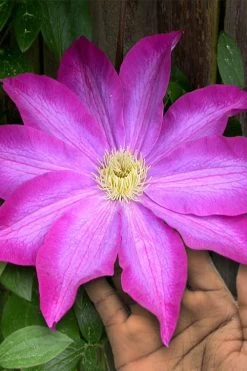

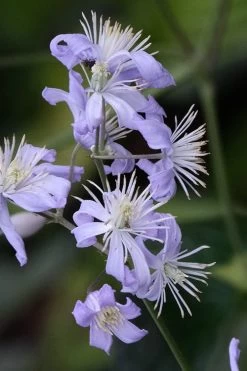







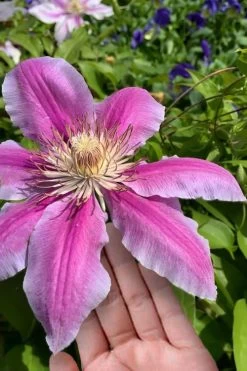
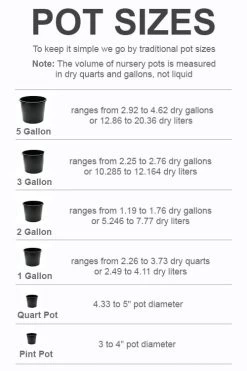
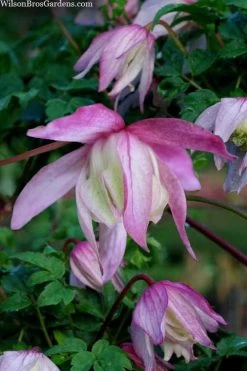
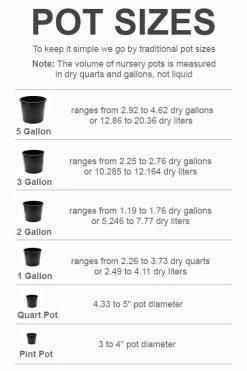
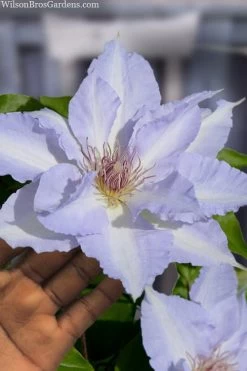

Reviews
There are no reviews yet.